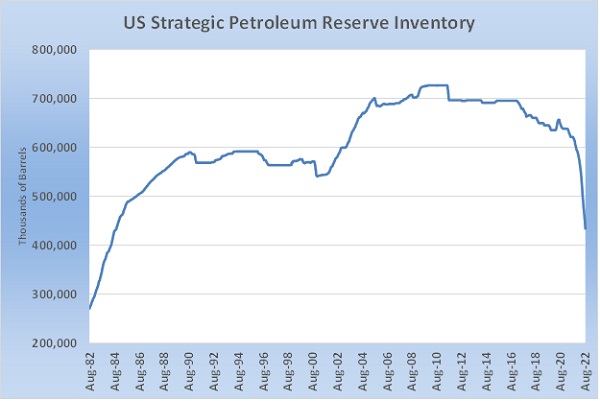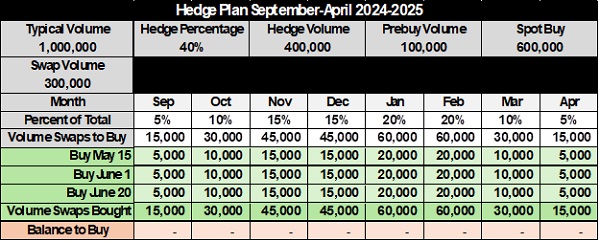Part I: Russia/Ukraine conflict to intensify ‘energy war’ this winter
Trader’s Corner, a weekly partnership with Cost Management Solutions, analyzes propane supply and pricing trends. This week, Mark Rachal, director of research and publications, discusses the challenges of meeting customer expectations this winter.
Fans of the HBO series “Game of Thrones” are familiar with the phrase “Winter is coming.” Contextually, it was said in relatively good times as an ominous warning that times are going to get tougher, and one best use the easier times to prepare for the harder. In terms of a retail propane business, winter is the time that we make our money, but it is also the time of our greatest challenges and pressure. What makes the winter tough is the pressure of meeting expectations. We want to provide good, reliable service to our customers. Our reputation and livelihoods depend on it.
For a couple of weeks in Trader’s Corner, we are going to take a broader view of winter. To be sure, what we are going to explore will be impactful to us in the propane industry and as American citizens, but the focus is going to be on how the U.S. is doing in the energy war that will certainly intensify this winter. Right after Russia invaded Ukraine, we wrote several Trader’s Corners setting the stage for this energy war. Our conclusion then was that Russia was strongly winning the energy war before the first shot was fired in Ukraine. We stand by that assessment.
Russia is getting more revenue from energy sales now than it did before the war. Its crude has continued to move despite many EU countries and the U.S. ending purchases. As we said before, replacing Russian natural gas supplies would be harder than replacing its crude. The price of natural gas in Europe reflects that fact. Before Russia started staging troops for its invasion, natural gas at the Dutch trading hub was $11.28 per mmBtu. Today, it is at $56.73 per mmBtu, and that is down from a peak of $99.71 in late August. Prices could easily head back to that level this winter. Over the summer, Russia was only sending about 20 percent of the supplies to the EU that it did before the war and is currently not sending any supply. It says it has technical issues, but it’s obvious they are using energy as a weapon of war.
Russia knows it will have tremendous leverage in the energy war this winter, and it plans to leverage that to achieve its aims in Ukraine. That fact must be a key factor in the decision by Ukraine to begin its current offensive to retake land lost during Russia’s initial invasion. It knows there is a risk to its military support from Europe as Russia turns the screws in the energy war. It knows it could come under pressure from European countries to end the war so that energy supplies from Russia will resume. At this point, the actual military conflict in Ukraine does not appear to be going well for Russia, but make no mistake, it is still winning the energy war with Europe.
It is going to take a tremendous amount of discipline and sacrifice by the people of Europe this winter to turn the tide of that war. Russia’s strongest weapon is natural gas because it is not as easily replaced as crude. As we said in our initial assessment, it is not a matter of natural gas production/supply; it is a matter of logistics. There simply isn’t the capacity around the world to liquefy enough natural gas (LNG) and move it by ship to Europe to offset what Russia was easily sending via pipeline. Nor does Europe have the capacity to receive the LNG and convert it back to a gaseous state. Solving the logistical issues is a matter of years, not months. Europe is not markedly more self-sufficient in natural gas supply now than it was at the beginning of the war. Frankly, we have seen little information that suggests it is making much of an effort to increase natural gas production. The focus has been almost exclusively on reducing demand.
LNG capacity constraints limited what the U.S. could do to help Europe to begin with, and then the U.S. lost about 20 percent of its LNG export capacity when the Freeport export facility had an explosion and fire that idled it in mid-summer. It is scheduled to be back online in November and will hopefully start exporting 2 billion cu. ft. per day to Europe soon after. Since the timeline for providing more help with natural gas is so long, the area where the U.S. had the opportunity to help more quickly was with crude and refined fuels.
Next week, we will explore in more detail what the U.S. has done, but we want to begin with the release of crude from strategic reserves. That was the low-hanging fruit in this war: Release crude from strategic reserves so that the U.S. could end its imports of Russian crude and send more crude to Europe. The Biden administration committed to releasing a million barrels per day (bpd) from our strategic reserve over a six-month period. That was 180 million barrels that was scheduled to stop at the end of this month. Then, more releases were announced that will take them through the end of October. It has been a huge commitment and has brought U.S. strategic reserves to their lowest since 1984.
As of Sept. 9, the U.S. Strategic Petroleum Reserve stood at 434.057 million barrels. It is down 292.560 million from its peak of 726.617 million set on Jan. 1, 2010. Since the beginning of the year, the reserve is down 159.325 million barrels, nearly 27 percent. On Jan. 1, the reserve represented 98 days of the crude import rate at that time. It represents 75 days at the crude import rate now. The import rate dropped from 6.069 million bpd Jan. 1 to 5.792 million bpd on Sept. 9.
If our country is going to make that kind of commitment and increase its energy vulnerability that much, we need to know that its crude production is increasing at a rate that will meet our needs as well as replace the reserves. And beyond that, at a rate that will allow us to continue helping our allies in Europe once the reserve release is over. We will delve deeper into production and import/export numbers next week to see how we are doing. The tremendous amount of military aid we are sending to Ukraine is having an impact on the battlefield, but are we having the same impact in the energy war?
Call Cost Management Solutions today for more information about how client services can enhance your business at 888-441-3338 or drop us an email at info@propanecost.com.

















